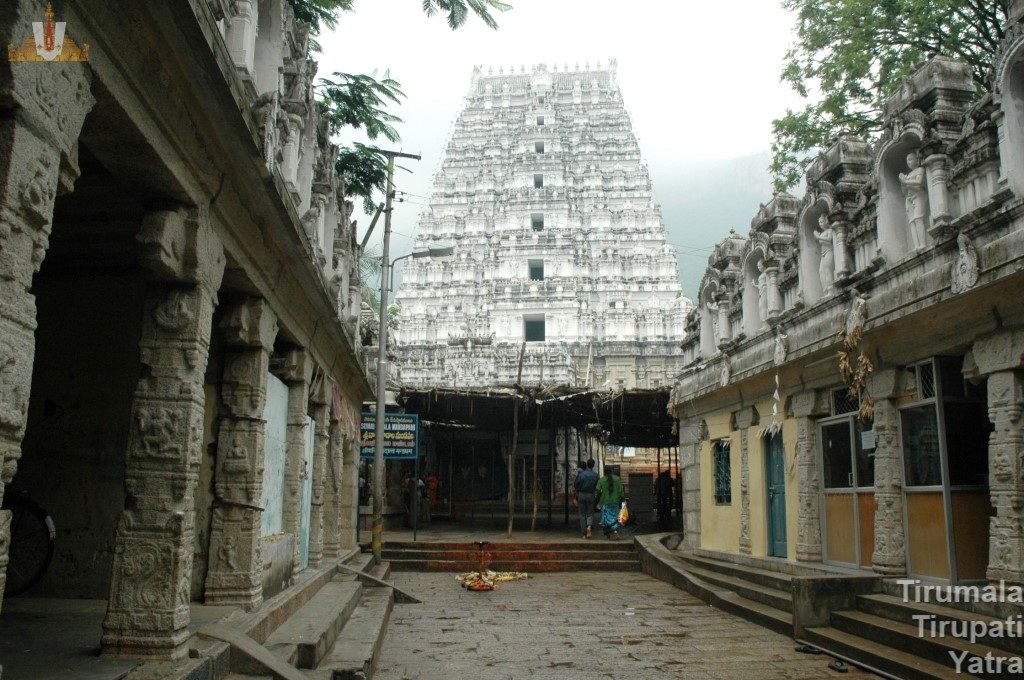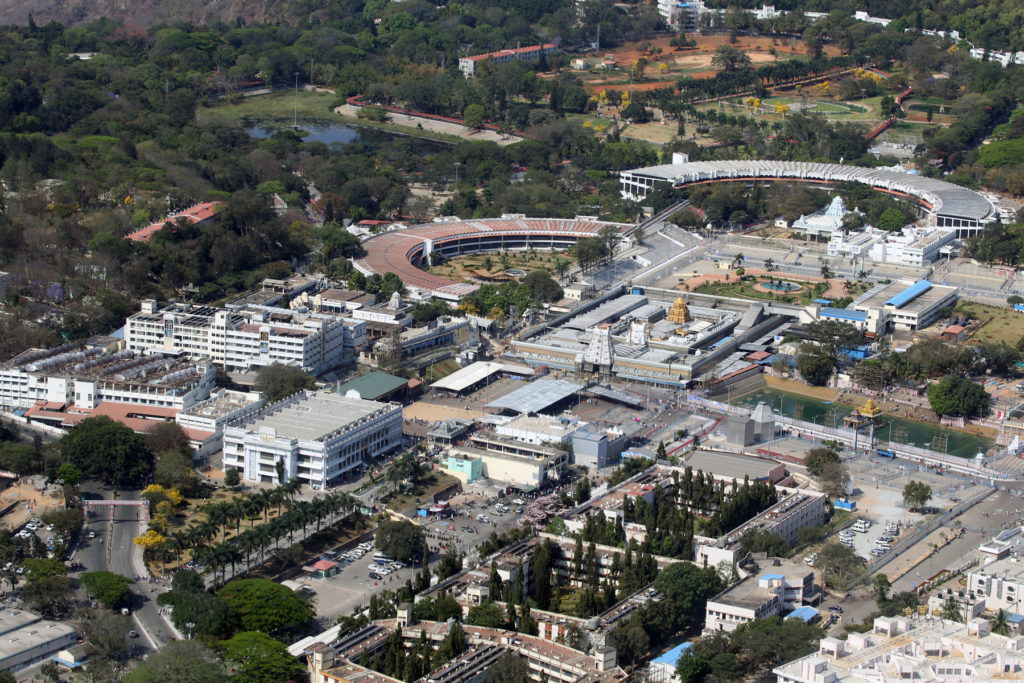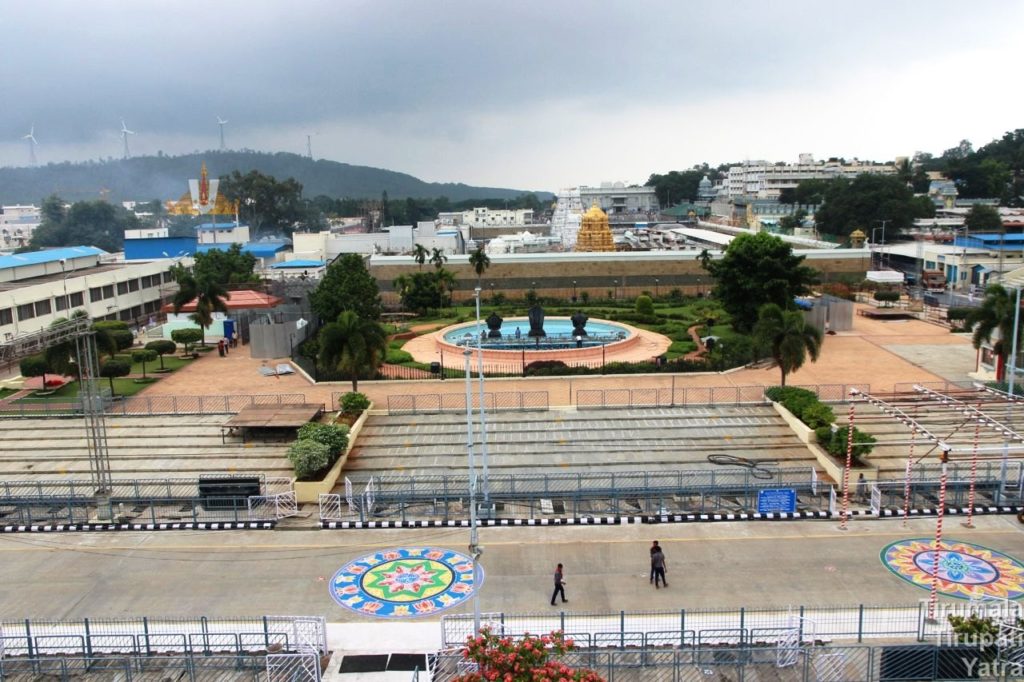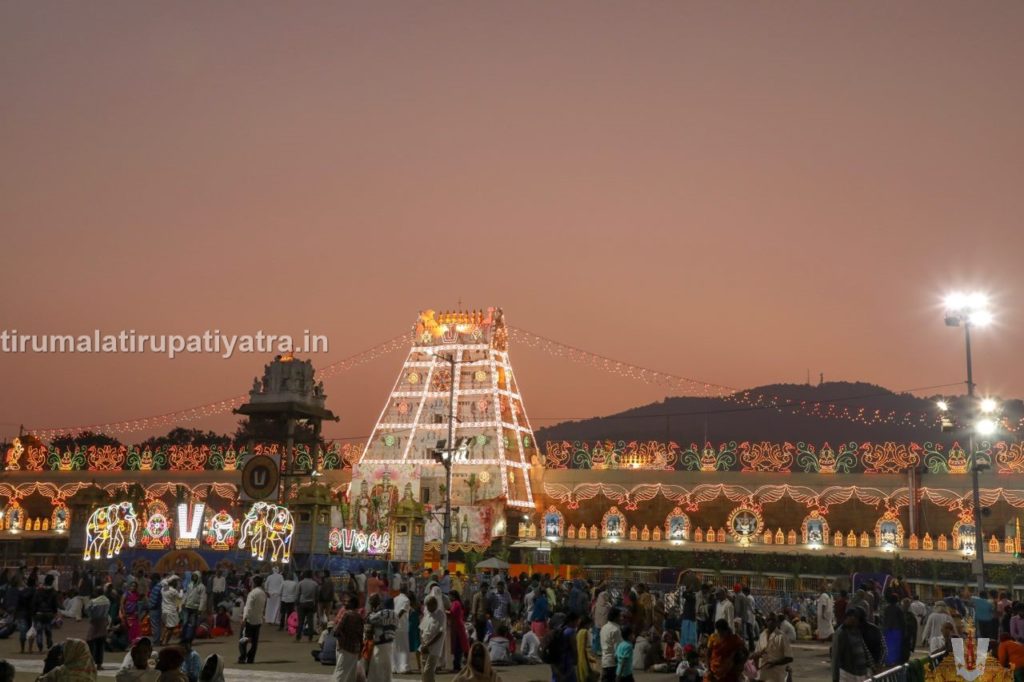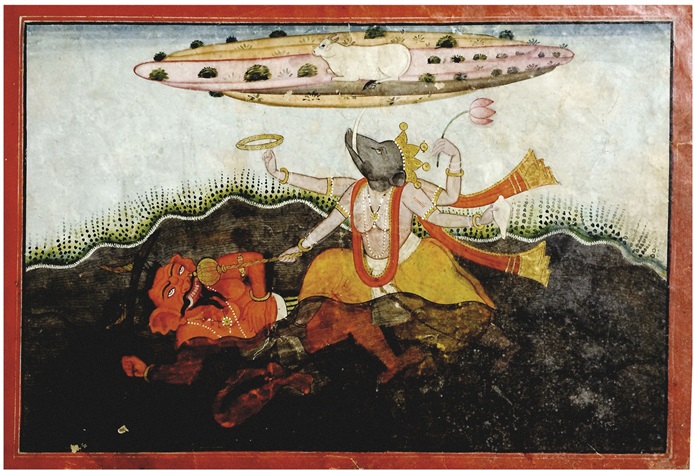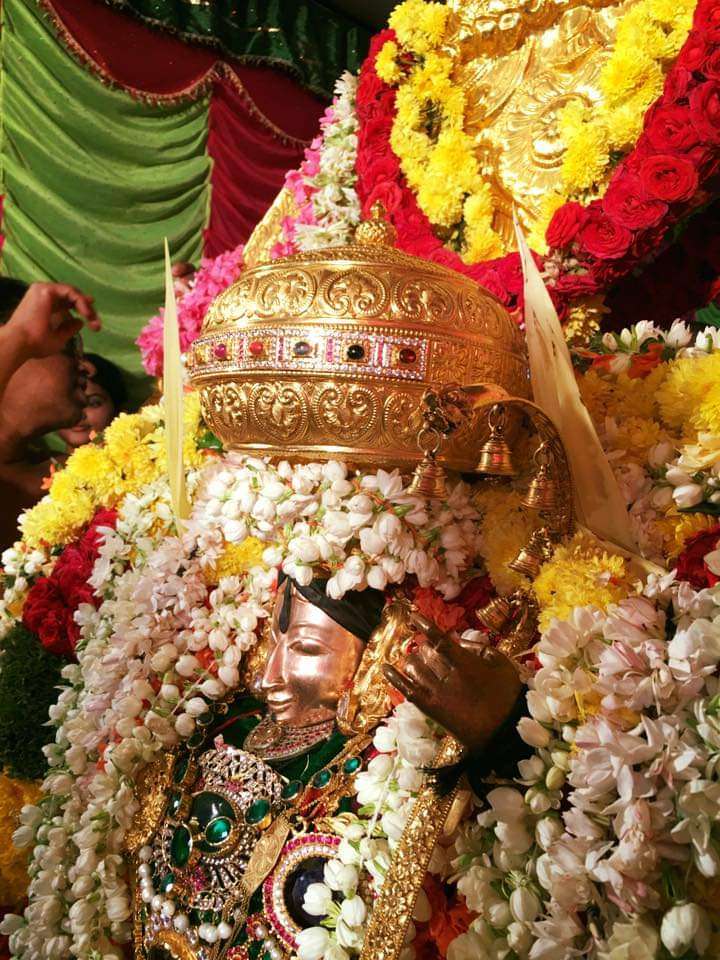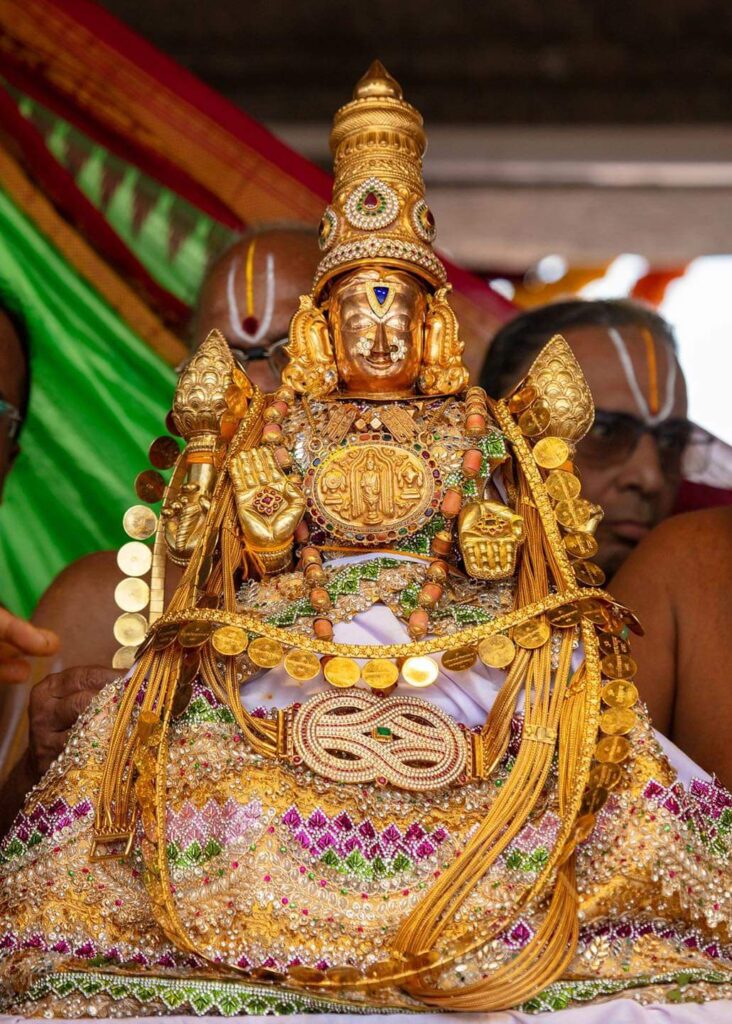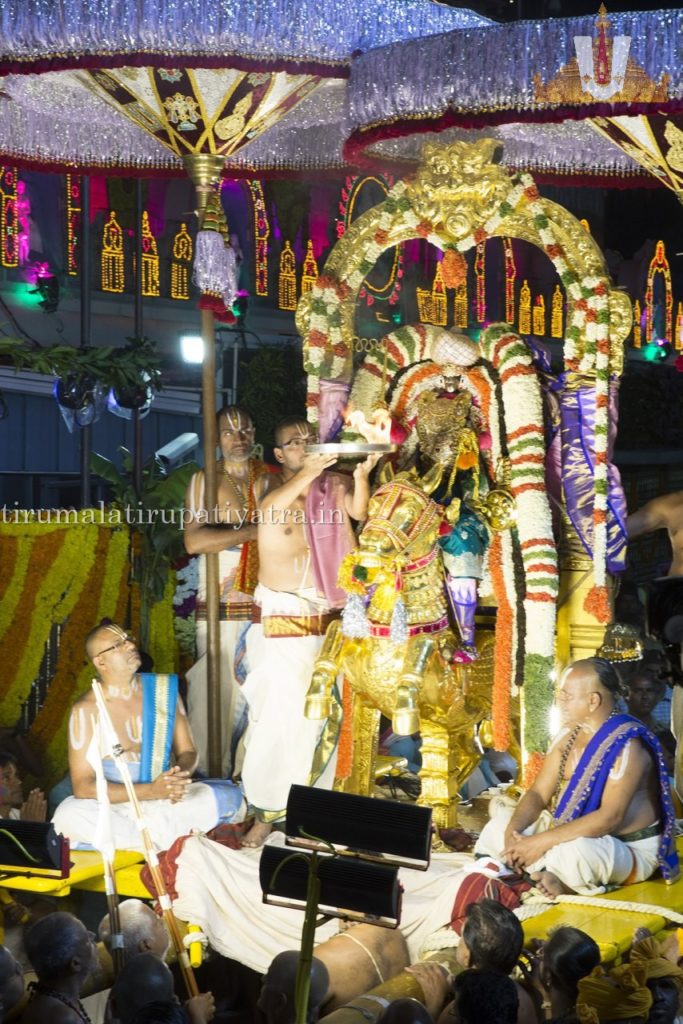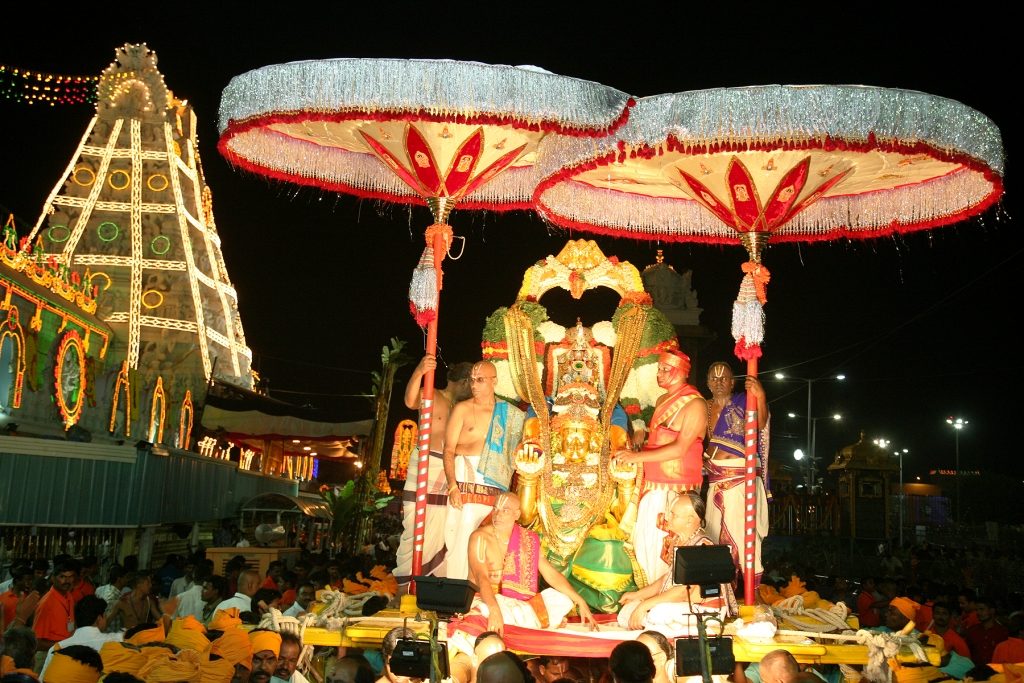Padala Mandapam The Seven Hills of Tirumala are as sacred as the Vedas. The holy Vedic hymns are their stones. The root of the footpath leading to the top of these hills, Alipiri, is the pedestal of the seven hills. A pilgrim takes the first step of the journey to the holy abode of the Read More
Tag: tirupati
Tirupati is a city in the Indian state of Andhra Pradesh. It is the administrative headquarters of the Tirupati district
Glory of Lord Venkateswara – Tirupati Balaji
Glory of Tirupati Balaji Lord Sri Venkateswara is the supreme God. Devotees across the world throng the holy shrine in Tirumala throughout the year to offer their vows on fulfillment of their wishes. A glimpse of God even for a few seconds will make them forget their travails of the journey. Bhakta Sulabha Generally, it is Read More
Tirupati Balaji Idol Description
A description of the idol of Lord Venkateswara (Tirupati Balaji) The idol of the Lord, Tirupati Balaji, or Lord Venkateswara Swamy is a majestic, beautiful, and superbly executed one. The full majesty, divine grace, and unbounded compassion of the Lord is manifest even to the uninitiated either when the Lord gives darshan draped in all Read More
Tirupati Balaji – Dhruva Bera – Tirumala Temple
Tirupati Balaji The main Deity famously known as Tirupati Balaji is also termed mula virat (Moola Virat), Dhruva Murthy, Dhruva Beram, and Mula beram. (moola beram). This idol of Salagrama stone self-manifestation of the Lord wearing a disc and conch in the sanctum sanctorum of Ananda Nilaya. It is about 8 feet high. The Dhruvabera Read More
Varaha Kshetram – Manifestation of Sri MahaVishnu
Varaha Kshetram The Seven Hills of Tirumala in total is being called ‘Varaha Kshetram‘. Sri Venkateswara Swami and Sri Varaha Swami temples are located here. Having the first darshan of Lord Varaha Swami, the darshan of Sri Venkateswara Swami later by the devotees has been a practice for several years and is the specialty of Read More
Metlotsavam – 4 times in a year – A Unique Spiritual Program of Dasa Sahitya Project
Dasa Sahitya Project to conduct “Metlotsavam” – In the Memory of Sri Vyasatirtha Tirumala – the sacred abode of Sri Venkateswara Swamy is unparalleled in its spiritual glory. As per Bhagawan Vedavyasa, a holy place like Tirumala and a God like Sri Venkateswara never existed in the past nor will there be in the future. Such Read More
Utlotsavam: Explore the Vibrant Hindu Festival
Sikyotsavam or Utlotsavam Sikyotsavam, Utlotsavam, or Uriyadi festival is celebrated with full gaiety and religious fervour in Tirumala and Tirupati every year. This Historical festival is celebrated, and many devotees participate to observe the event. Lord Venkateswara’s Temple is known for many festivals throughout the year and it is called ‘Nitya Kalyanam Pacchatoranam’. Lord Venkateswara Read More
Glory of Divine Mother – Tiruchanur
The Glory of the DIVINE MOTHER Sriman Narayana, the Almighty manifests Himself in five distinct forms namely the Param, Vyuham, Vibhavam, Antaryami and Archa. In all these forms the Lord is always inseparably united with His divine consort Sri Mahalakshmi. The Parabrahamam is identified only by the presence of the “Sri”, the Divine Mother. The Read More
Aswa Vahana Seva 2018
There is one ceremony or the other almost daily for Lord Venkateswara manifest on Tirumala. Different ceremonies are conducted on a grand scale for the Lord with different time frames— daily, fortnightly, monthly, and yearly. Of them, special mention may be made of annual Brahmotsavas. Devotees go on raptures witnessing the Lord on different carriages Read More
Importance of Brahmotsavams
Brahmotsavam God Srinivasa was the cynosure of every eye, strolling on the streets of Tirumala with Sridevi and Bhudevi. One day he would ride a horse, comparable to Ucchaisrava, on another on an elephant like Airavata, on yet another day Adisesha or Garuda, the personification of the Vedas. He showered his blessings on all the Read More
